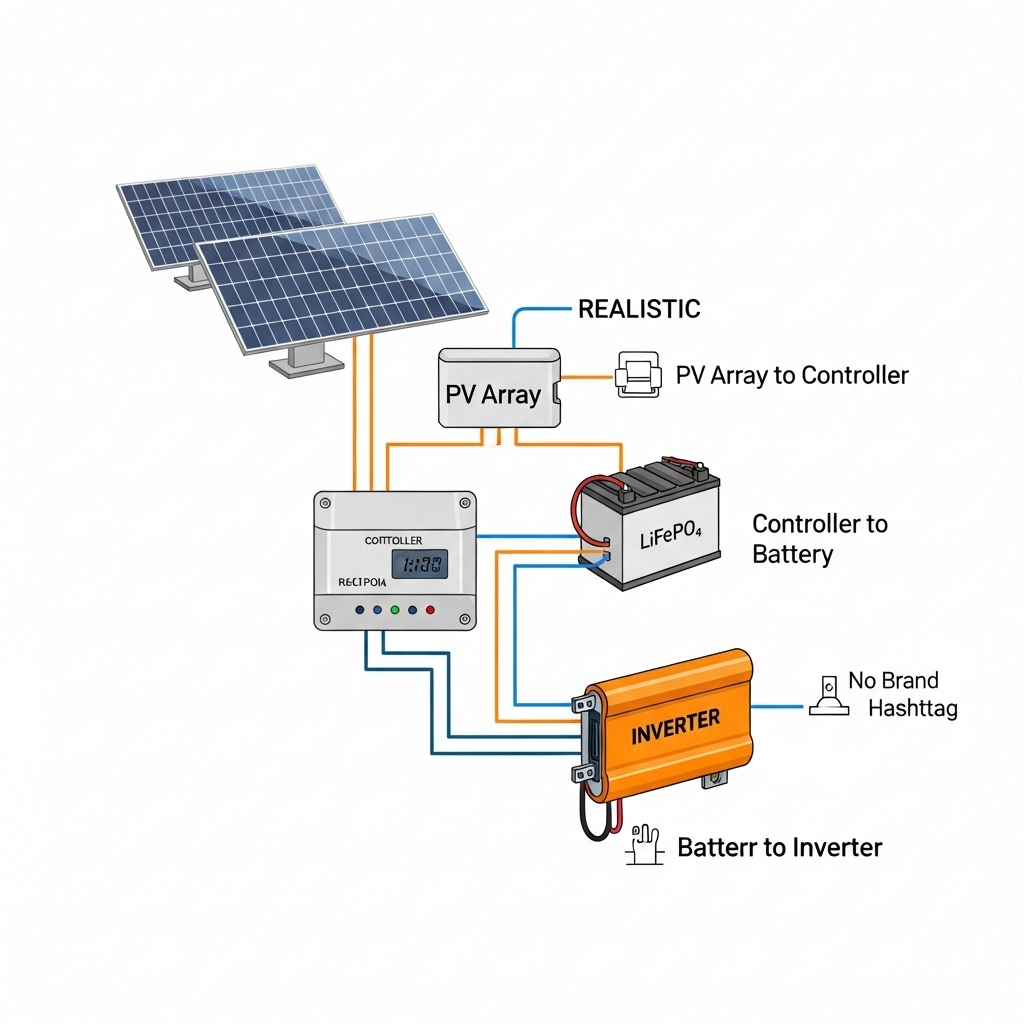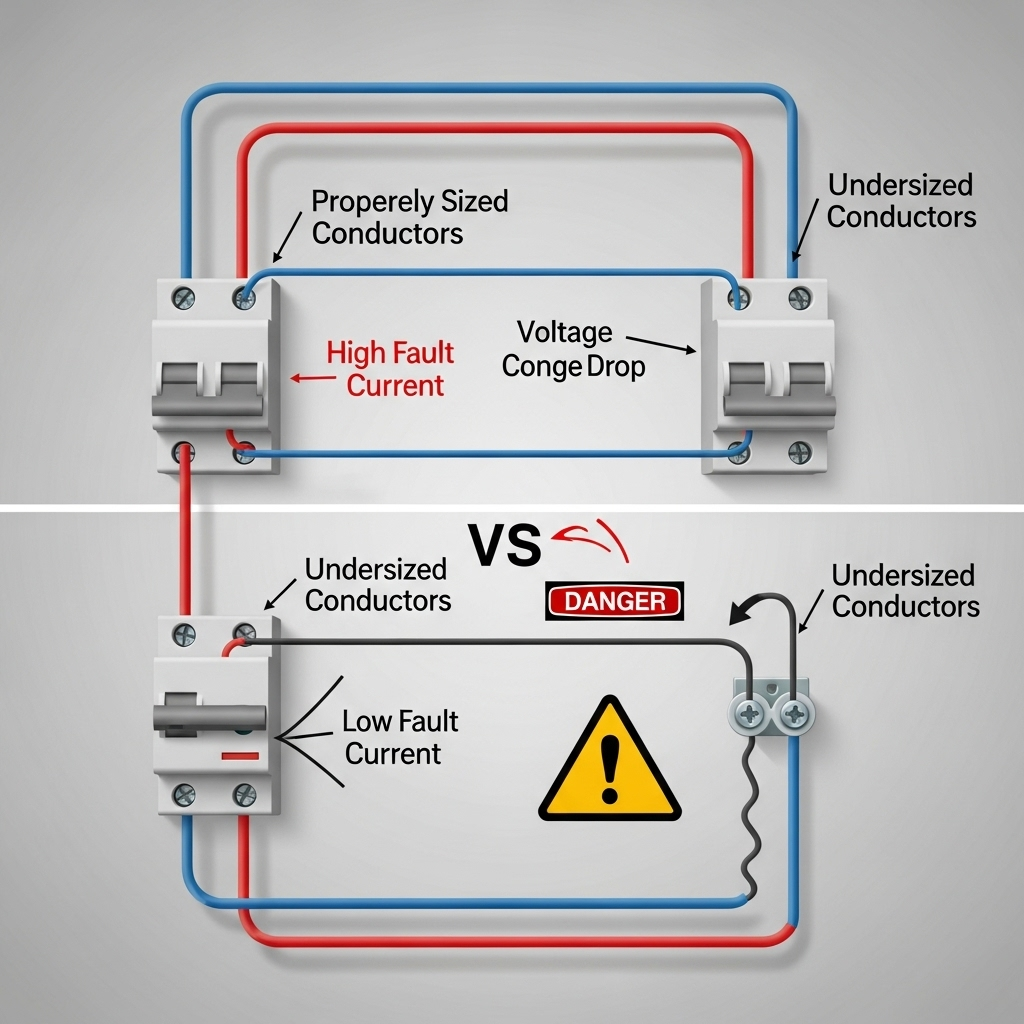Voltage drop is a silent thief in solar and energy storage systems. It quietly steals power, reduces efficiency, and can even cause frustrating equipment shutdowns. Understanding and controlling it is not just a technical detail; it is fundamental to the performance, safety, and financial return of your energy investment. This text provides the essential knowledge for setting proper voltage drop limits, performing accurate calculations, and designing a robust Solar+Storage system that delivers its full potential.
Why Voltage Drop Matters in Solar and Storage Systems
Ignoring voltage drop can lead to a range of problems, from subtle performance degradation to complete system failure. Its effects ripple through every part of your installation, impacting everything from energy harvest to the lifespan of your components.
The Impact on System Efficiency and Power Output
Every foot of wire in your system has a small amount of electrical resistance. As current flows through this resistance, a portion of the electrical pressure—the voltage—is lost. This lost energy is converted into heat. The power loss is calculated by the formula P = I²R (Power Loss = Current Squared × Resistance). This means that in high-current applications, like battery storage systems, the losses can become substantial. A seemingly small 3% voltage drop on the DC side can translate into a significant reduction in the kilowatt-hours your system produces over its lifetime.
Inverter Performance and Nuisance Tripping
Inverters are the heart of a solar power system, and they are designed to operate within a specific voltage window. If the voltage from the solar array or battery bank drops too low by the time it reaches the inverter terminals, the inverter may register a fault and shut down. This is a common cause of 'nuisance tripping,' where the system stops working even though there is ample sunlight or battery charge. These shutdowns most often occur when the system is working its hardest—during peak sun or when large appliances are running—precisely when you need the power most.
Safety and Equipment Longevity
The energy lost to voltage drop becomes waste heat in the conductors. Severely undersized wires can overheat, which poses a direct safety risk by potentially damaging the wire's insulation and creating a fire hazard. Even moderate overheating, sustained over years, can degrade conductor insulation and connections, leading to premature system failure. Proper conductor sizing for minimal voltage drop is a core principle of a safe and durable installation.
Establishing Acceptable Voltage Drop Limits
While zero voltage drop is impossible, setting practical and efficient limits is a key design step. These limits are guided by electrical codes, industry best practices, and the specific requirements of your equipment.
Understanding NEC and IEC Recommendations
Both the National Electrical Code (NEC) in the United States and the International Electrotechnical Commission (IEC) provide recommendations to ensure safety and operational efficiency. While these codes often state maximum allowable limits, best practice is to design for values well below these maximums. For instance, the NEC suggests a general limit of 3% for branch circuits, but for performance-sensitive solar circuits, a tighter tolerance is better. As noted in the IEA's report, The Power of Transformation, maintaining voltage levels within acceptable ranges is a known challenge in distribution grids with high penetration of renewables, reinforcing the importance of careful design from the start.
| Circuit | Recommended Voltage Drop Limit | Reason |
|---|---|---|
| PV Source Circuits (Panels to Combiner/Inverter) | 1-2% | Maximizes energy harvest from the panels. |
| Battery to Inverter Circuit | 1-2% | Crucial due to high currents; prevents inverter low-voltage faults. |
| Inverter AC Output to Main Panel | 1-2% | Ensures appliances receive stable voltage. |
Differentiating Between PV and Battery Circuits
PV arrays and battery banks present different challenges. A solar array is typically configured with panels in series to create a high-voltage string (e.g., 300-600VDC). At this high voltage, the current is relatively low for a given amount of power, making voltage drop less severe. Conversely, a battery bank operates at a much lower voltage (e.g., 48VDC). To deliver the same power, it must produce significantly higher current. Because power loss is proportional to the square of the current, the high-current battery-to-inverter connection is the most critical part of the system to protect against voltage drop.
A Practical Approach for Residential Systems
For residential solar voltage drop limits, a prudent design goal is to keep the drop on all DC circuits below 2%. This conservative target ensures that your inverter receives stable voltage, your batteries charge and discharge efficiently, and your energy losses are minimized. Achieving this requires careful calculation and selecting the appropriate conductor size from the outset.
Calculating and Mitigating Voltage Drop
Once you have established your limits, the next step is to calculate the expected drop and implement strategies to keep it within your target. This involves a straightforward formula and a few key design choices.
The Core Formula and Key Variables
For DC circuits or single-phase AC circuits, the voltage drop can be calculated with a standard formula:
VD = (2 * K * I * L) / CM
- VD: Voltage Drop (in volts)
- K: Resistivity of the conductor material. For copper, it is approximately 12.9 ohms-cmil/ft. For aluminum, it is about 21.2 ohms-cmil/ft.
- I: Current (in amps) flowing through the conductor.
- L: One-way length of the conductor run (in feet).
- CM: Circular Mils of the conductor, which is a measure of its cross-sectional area (found in wire gauge tables).
Conductor Sizing: The Primary Solution
The most direct way to reduce voltage drop is to increase the size of the conductor. A larger wire (indicated by a smaller American Wire Gauge, or AWG, number) has a greater circular mil area. This larger cross-section provides less resistance, much like a wider pipe allows water to flow more easily. While larger copper cables are more expensive, this upfront investment is often recovered through increased energy production and system reliability over the long term.
Advanced Strategies Beyond Thicker Wires
Sometimes, simply using a thicker wire is impractical or cost-prohibitive. In these cases, consider alternative design strategies. One powerful method is to increase the system's operating voltage. For example, designing a system around a 48V battery bank instead of a 12V or 24V system will significantly lower the current for the same power output, thereby reducing voltage drop. Additionally, optimizing the physical layout of your components to shorten the distance between the batteries, inverter, and solar array can make a meaningful difference by reducing the 'L' (length) variable in the calculation.
Real-World Implications and Performance Metrics
The technical details of voltage drop directly translate into the financial and operational reality of your system. Proper design is not just about meeting code; it is about maximizing your investment.
The Financial Cost of Energy Loss
Consider a 10 kW solar system that operates for an average of 5 peak sun hours per day. A 3% voltage drop means a loss of 300 watts (10,000 W * 0.03) whenever the system is at full power. Over a day, that is 1.5 kWh of lost energy. Over a year, it adds up to over 540 kWh—energy you paid for with your equipment but was lost as heat in the wires. The International Renewable Energy Agency (IRENA) highlights in its publication Grid Codes for Renewable Powered Systems that managing system parameters like voltage is critical for stability, a principle that applies equally to large grids and individual installations.
Linking Conductor Design to Overall Performance
Conductor sizing is just one piece of a complex puzzle. The efficiency of your panels, the capabilities of your inverter, and the health of your battery all contribute to the final output. To see how these individual component choices fit into the bigger picture, it is useful to consult a comprehensive reference on overall solar and storage performance. For instance, the Ultimate Reference for Solar & Storage Performance provides valuable data on how factors like conductor sizing influence long-term efficiency and reliability. As investment in renewables continues to grow, as detailed in the IEA's World Energy Investment 2023 report, ensuring every installed system performs optimally becomes increasingly important.
Your Path to an Optimized System
Controlling voltage drop is not an optional tweak; it is a foundational aspect of high-performance system design. By understanding its impact, setting strict limits, and using correct conductor sizing and design strategies, you ensure your solar and storage system operates efficiently and reliably for years to come. This proactive approach protects your equipment, maximizes your energy production, and delivers the energy independence you expect.
Disclaimer: This information is for educational purposes only. Always consult with a qualified electrician and adhere to local electrical codes for any solar or energy storage installation. This content does not constitute professional engineering or financial advice.
Frequently Asked Questions
What is a good voltage drop percentage for a solar system?
A common target is 2% or less for the DC circuits (from panels to inverter and from battery to inverter). While some codes might allow up to 3% or more, minimizing the drop enhances efficiency and prevents performance issues.
Can voltage drop damage my solar inverter?
While it is unlikely to cause direct physical damage, sustained low voltage can cause the inverter to constantly shut down and restart (nuisance tripping). This can stress components over time and significantly reduces your energy production.
Is a 5% voltage drop acceptable?
A 5% voltage drop is generally considered too high for the main DC circuits in a solar and storage system. This represents a significant loss of power and is very likely to cause performance problems with inverters, especially under heavy load. It is best to keep the drop well below this level.





Leave a comment
All comments are moderated before being published.
This site is protected by hCaptcha and the hCaptcha Privacy Policy and Terms of Service apply.